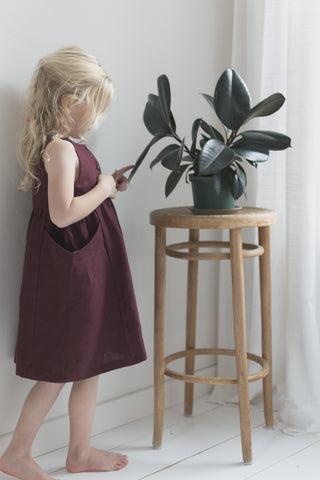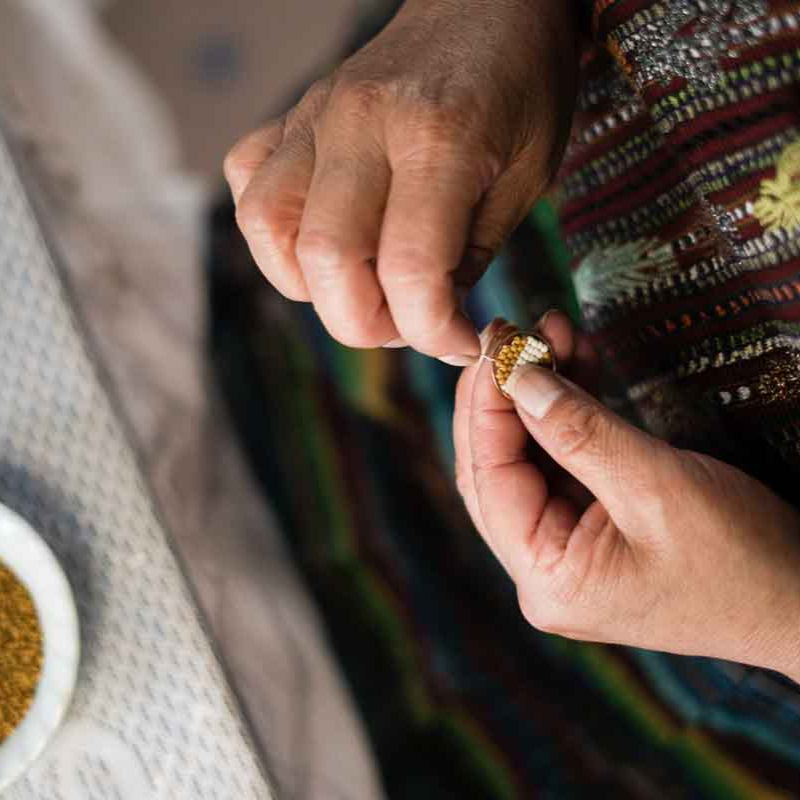
Lesson Plan for Elementary Classrooms: "Who made our clothes?"
Share

Recently l was asked to speak about fair + little with elementary students K-5 at my local elementary school. This was a great opportunity to gently open up the conversation about "who made our clothes" with little people. When I think strategically about change that needs to happen in the fashion industry, my money is on this young generation. It's our responsibility to get them asking the right questions and sparking their curiosity. They can take it from there.
Objective: Spark curiosity in students by asking the following questions about the clothes we wear every day:
1. Where are they made?
2. How are they made?
3. What are they made of?
4. Who made them?
Supplies: Basket (kids love wondering what's inside) with a polyester shirt and a cotton shirt, cotton blossom (optional)
Time: 15-20 minutes
1. Where?
Ask for three volunteers who are wearing a jacket or layer that's easy to remove.
Find the "country of origin" tag in their clothing item. Locate this country on a map or globe. Find your current location. Help them make connections about the distance between these two places.
2. How?
Ask if anyone knows what a "seam" is on clothing. Have the students identify the seams and hems on their clothing. Ask what is used to make this seam.
3. What?
Ask: "There are two materials most commonly used to make clothes. What are they?" (cotton and polyester).
Ask: "Which one is a plant? Which one is man made?" If possible, bring a cotton blossom also to pass around. Pass around a cotton shirt and a polyester shirt and ask them to feel the difference.
Ask: "What are other materials that are used for clothing?"
Some materials are better than others for the planet. And materials can be made the right way or the wrong way: for example, cotton is a plant and uses a lot of pesticides to keep bugs away which is bad for the farmers and the land, but organic cotton doesn't use pesticides. However, all cotton uses a lot of water to grow.
Ask: "How many gallons of water do you think is used to make one t-shirt?" (713, or almost two hot tubs)
Ask: "Polyester is made of the same raw material as plastic, so what happens to it after it gets thrown away? How can we make our clothes last longer?"
4. Who?
Ask: "What machine makes the seams in our clothes? Do those work machines work automatically?"
Sewing machines need operators to work them called garment workers. There are over 40 million garment workers in the world and 85% of them are women.
Unfortunately, these people are often paid very poorly and in unsafe working conditions. One factory in Bangladesh collapsed in 2013 killing over one thousand workers and injuring many more. Now, the workers there are asking for a little more money so they can pay for the things they need in life like shelter, food, education, and medical care.
Ask: "How much more money an hour do you think they are asking for?" (17 cents, which would make our basic clothes cost about $1 more)
Homework:
At home, the students can pull out their favorite shirt. They can look at where it's made, how many seams are used to hold it together, what materials are used, and wonder who the person is that made it. If they want to know that the people who made their clothes were paid fairly and the planet was respected in the process, encourage them to keep asking these questions.
Want to involve your child in shopping responsibly? Check out this post.
---
Fair + little was born as a way to talk to children about who made their clothes. Here is a video of the treasure dress being made: https://www.youtube.com/watch?v=1fGh5_9_ge0

